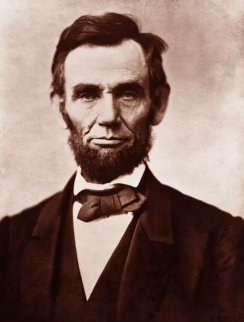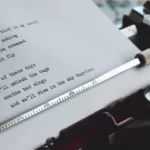How to Excel in Reading Comprehension: Historical Stories
Historical stories, also known as historical fiction, are captivating narratives that take us back to events that happened in the past. Unlike autobiographies, which are written by the person who experienced the events, historical stories are created by other people and mix together facts and fiction.
This blending of facts and fiction allows us to explore history in a unique way. When there are gaps in our knowledge of the facts, authors use their imagination to fill in those gaps and create a compelling story.
In this blog post, we will explore the characteristics of historical stories and the types of questions that often come up when reading this genre.
Types of Question in Historical Stories
Because of this mix of fact and fiction, historical stories lead to three main types of questions:
I. Inference Questions
Historical stories often make us think about what might have happened based on the information we have. We are asked to draw conclusions and make educated guesses about the thoughts, feelings, and motivations of historical figures. By putting together evidence, interviews and historical context, we can gain a deeper understanding of the events.
Example question: Based on the story, what do you think the main character's motives were for joining the revolution?
II. Detail Questions
In historical stories, there are specific details that we can learn from the narrative. These details might be about events, characters or the historical setting. While historical stories include fictional elements, they are still based on a lot of research about the time period.
Detail questions help us pay attention to the specifics and find the factual information in the story.
Example question: In the narrative, which significant event in Australian history is often linked with the Southern Cross flag and transpired in Ballarat, Victoria, on December 3, 1854?
III. Figurative Language Questions
Historical stories often use colourful language to make the narrative more vivid and emotional. Authors use figurative device like metaphors and similes to create strong images in our minds. Figurative language questions help us understand and appreciate these literary techniques.
Example question: In the story, what does the author compare the smell of the battlefield to, and what effect does this comparison have?
Reading Passage for Practice
After reading the passage, carefully analyze and attempt to answer the questions. Then, refer below for the answers.
Abraham Lincoln, the Inventor
Source: https://www.readingvine.com/passages/abraham-lincoln-the-inventor/

Abe leaned over the steamboat. "Not again. We're caught on a sandbar. This happens too often."
Abe and his friend Sam watched as the crew unloaded the cargo, piece by piece.
"Well, we might as well sit down. This will take a while," said Sam. "Too bad we have to travel so much."
Abe shook his head. "I'll sit, but while I'm sitting I'm going to figure out something to stop these boats from getting stuck in shallow water or on sandbars."
Abe took out his pad and started writing notes and drawing sketches. He'd scratch one note out and write another. Then he'd make more drawings.
Sam tried to look at what Abe was doing, but Abe wouldn't let him see.
"What are you doing, there Lincoln," said Sam. "So, being a Congressman for Illinois isn't enough. Now you want to be an inventor too?"
"You'll see. I'll create something to keep these boats afloat or my name isn't Abe Lincoln. Think of all the time we have to waste when we're stuck like this."
Sam stood up, still trying to see Abe's notes. "So, what's your idea?" He stuck his hands in his waistcoat pockets.
"Okay," said Abe. "Look here." He showed Sam a drawing of a boat with bellows, or air bags, on the sides.
"If there were some kind of bellows on the sides of the boat, they would make the boat lighter and keep it afloat in shallow water. The thing though is to figure out how to inflate the bellows when needed."
Sam studied the drawing. "That's a grand idea, Abe. And with your curiosity of mechanical things, I know you'll find a solution."
Hours passed as the crew unloaded the steamboat. They pushed it passed the sandbar, then reloaded the cargo.
When they were just about to move again, Abe jumped up. "I've got it. It'll need ropes and pulleys to inflate the bellows so the boat will be lifted up."
Sam patted Abe's back. "I knew you'd figure it out."
When Abe arrived back home in Springfield, he sought the help of a mechanic. Abe drew up plans and helped the mechanic create a model of the invention.
After getting everything ready, Abe went to the patent office of Mr. Robbins."Sir," said Abe. "I have here a model of a steamboat with inflatable bellows. The bellows, when inflated, will make the boat light enough to pass over shallow water. They will also make it easier to pass over sandbars. I need your help to file for a patent."
Mr. Robbins examined the boat and the accompanying notes. "Very well."
The next day Mr. Robbins filed the application. A month later, Abe received his patent.
Abe rushed over to Sam's house. "I've got it! I've got! Now I can get started on getting my invention manufactured. By next year, we can travel by steamboat without worrying about sandbars or shallow waters!"
Questions:
1. What problem motivated Abe Lincoln to come up with his invention?
a) Engine trouble on the steamboat
b) Frequent sandbar incidents during steamboat travel
c) Cargo theft on steamboats
d) Navigation challenges in deep waters
2. What did Abe propose to add to the sides of the boat to prevent it from getting stuck?
a) Anchors
b) Bellows or air bags
c) Extra cargo
d) Lifeboats
3. What did Sam think of Abe's invention idea?
a) He thought it was a terrible idea.
b) He believed it was too complicated to work.
c) He thought it was a great idea and had faith in Abe's ability to make it work.
d) He had no opinion on the matter.
4. How did Abe plan to inflate the bellows on the boat?
a) Using a manual pump
b) Using ropes and pulleys
c) Using a steam-powered engine
d) Using a lever system
5. What was the outcome of Abe's visit to Mr. Robbins' patent office?
a) He received immediate approval for his patent.
b) He was denied a patent for his invention.
c) Mr. Robbins agreed to help him file a patent application.
d) Mr. Robbins recommended selling the idea instead of filing a patent.
Answers:
1.Answer: b) Frequent sandbar incidents during steamboat travel .
The story mentions that Abe was motivated to find a solution because the steamboat frequently got stuck on sandbars.
2. Answer: b) Bellows or air bags
Abe's idea was to attach bellows or air bags to the sides of the boat to make it lighter and prevent it from getting stuck.
3. Answer: c) He thought it was a great idea and had faith in Abe's ability to make it work.
Sam was supportive of Abe's invention idea and believed in his problem-solving skills.
4. Answer: b) Using ropes and pulleys
Abe's plan was to use ropes and pulleys to inflate the bellows and lift the boat when needed.
5. Answer: c) Mr. Robbins agreed to help him file a patent application.
Mr. Robbins agreed to assist Abe in filing a patent application for his invention.
Final Words
Historical stories mix real events with made-up parts to make the past more interesting. When we ask questions that make us guess or think about a character's thoughts or actions, we can understand them better.
Asking about details helps us learn more about the time period they lived in, and when we notice special ways authors describe things in the story, we appreciate how they make it more exciting.
So, the next time you read a historical story, enjoy the mix of real and made-up parts and let yourself imagine being in the past.





0 comments